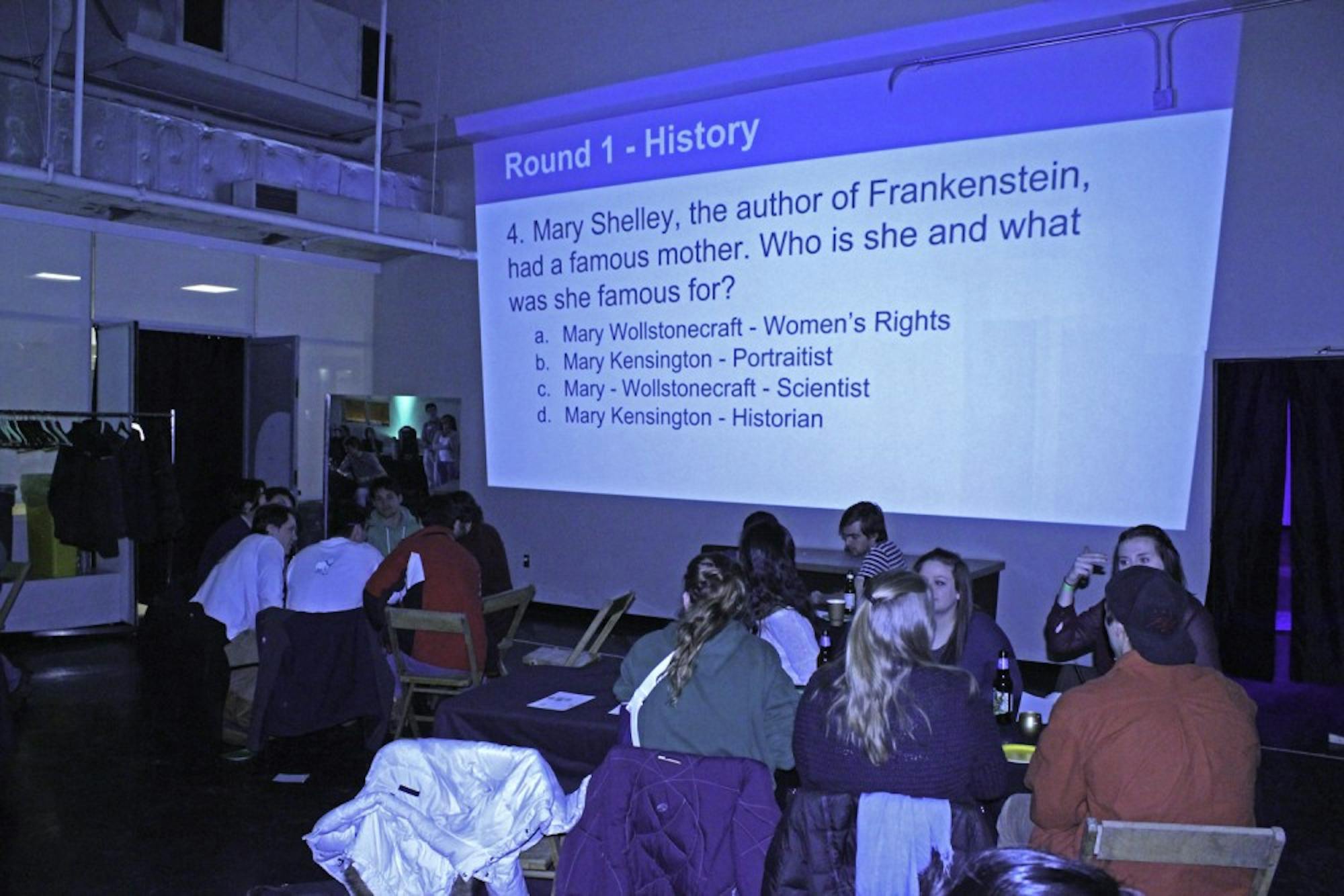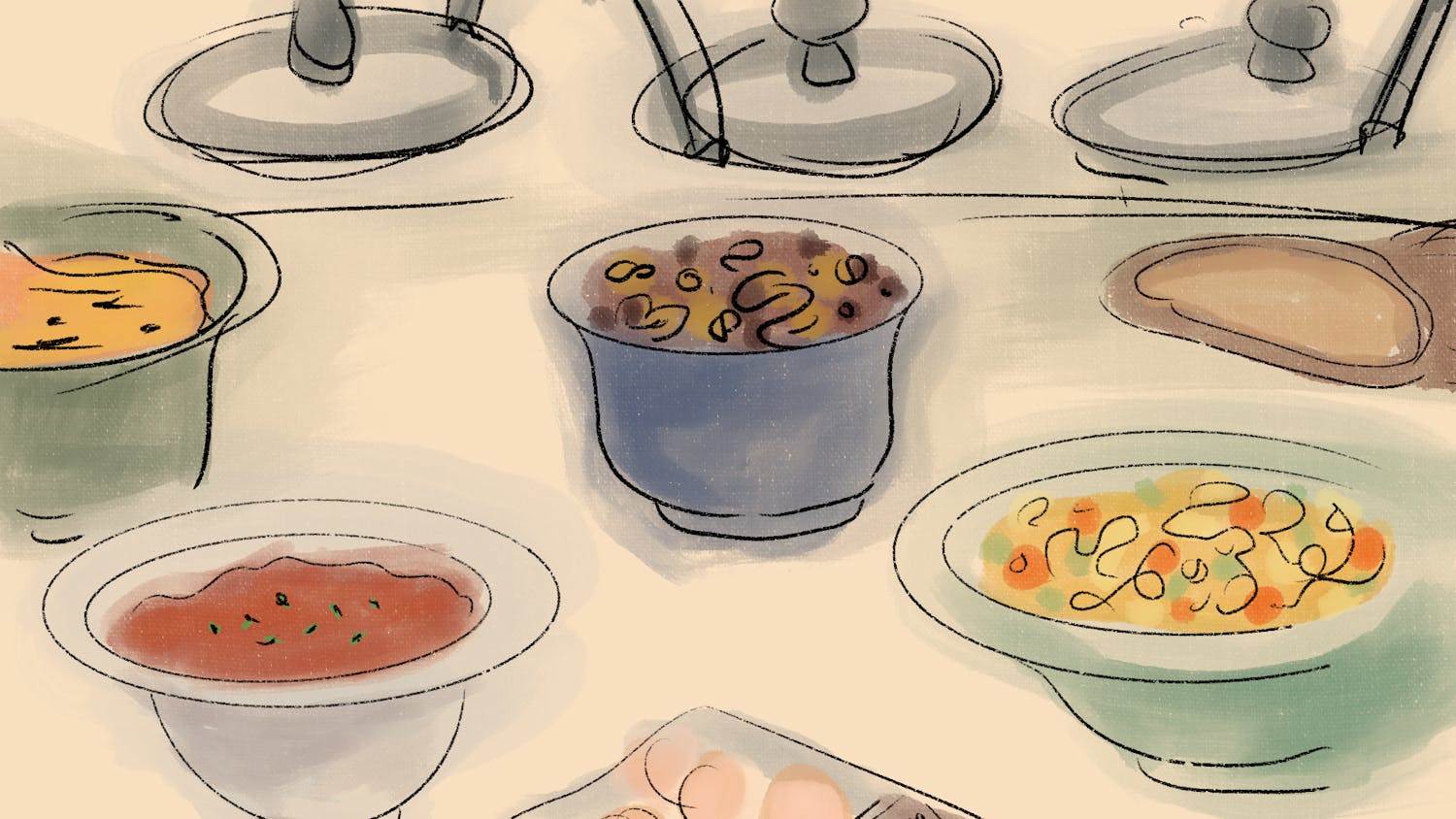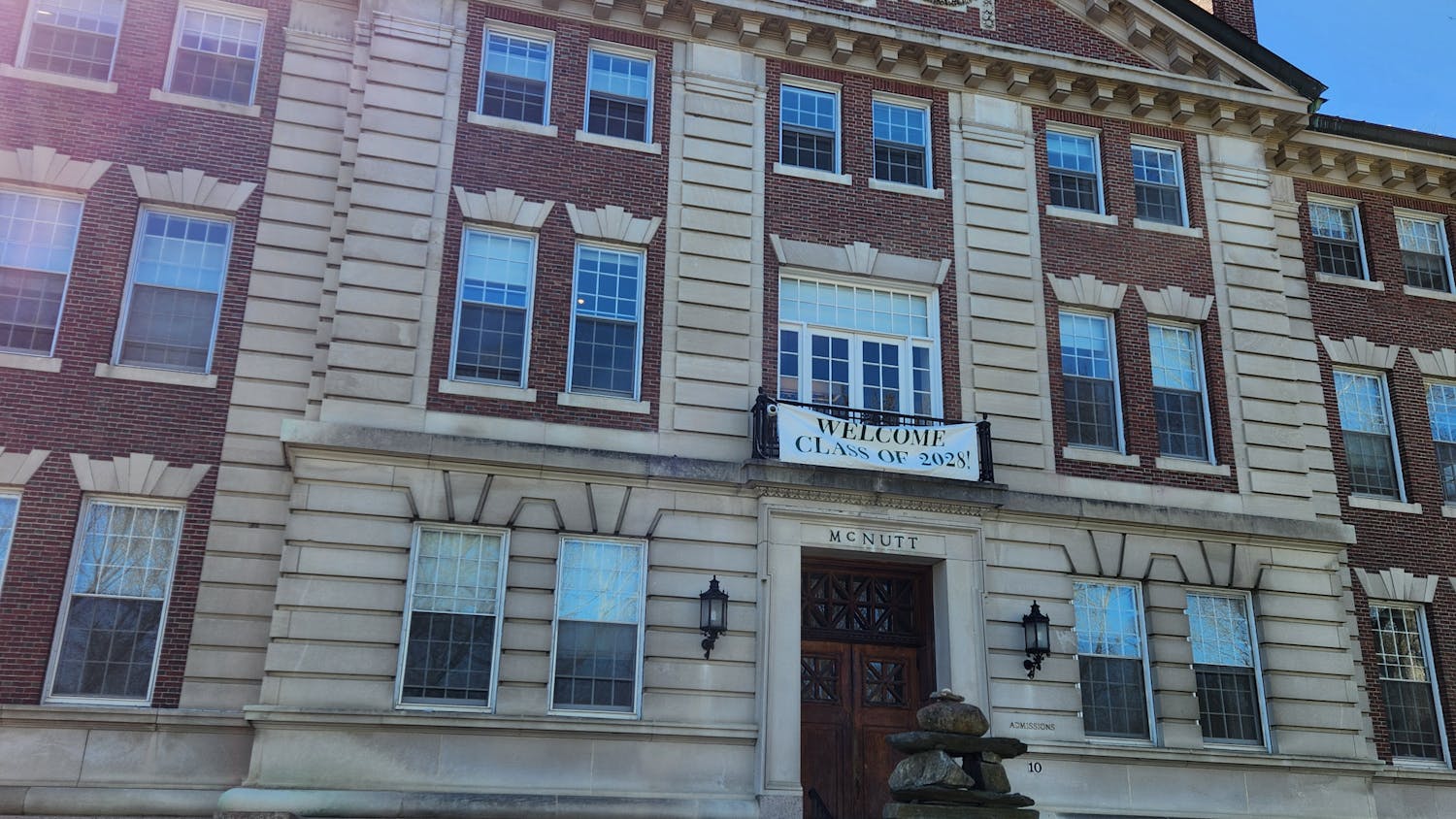On an otherwise quiet Thursday night, students headed to the Hopkins Center for an evening of doughnuts, beer, cider and dancing. At BarHop, a wide range of attendees lounge at tables lit by candles or compete in trivia while others begin to dance on floors lit in psychedelic, spiraling patterns as the music shifts from Dave Matthews and Tim Reynolds to Drake and Lil Wayne.
While students and organizers agree that Barhop — which celebrated its anniversary over Winter Carnival — has had a successful first year, the future of its funding and programming remains uncertain.
The three-room social event — at which free alcohol, soft drinks and snacks are available to students — occurs every Thursday and Friday at the Hop Garage. The initiative was originally funded by a donor who wished to see a bar on campus, head bartender Aaron Ellis ’15 said. Currently, BarHop employs 32 students and community members and draws crowds of as many as 200 students each night, manager Sean Gao ’13 said.
The program primarily appeals to upperclassmen students who are above 21, Ellis said. The bartenders — mainly students — do not serve alcohol to students under 21, often resulting in lower crowds of freshmen and sophomore students. In addition to upperclassmen, BarHop also provides a space for many graduate students, Anne Ressler ’14Th’15 said. Graduate students have fewer formalized social spaces on campus, and BarHop can help to fill that role, she said.
“It’s a place that I enjoy going with my friends,” she said. “It’s got a really cool sort of casual vibe. I really enjoy it as a very good example of the alternative programming that the College keeps talking about.”
BarHop’s future funding sources, however, are unclear at this time, Ellis said.
“Our estimates are that spring is what is going to determine what will happen,” he said. “Either we’ll run out of money or we’ll have a new donor.”
Gao said that BarHop’s funding comes from a variety of sources, including alumni donations and some College support, though he did not know the specific amount from either source.
In the course of its first year, BarHop has moved to expand its programming and experiment with new ideas. Initially a Thursday-only event, it is now open on both Thursdays and Fridays, Ellis said. Efforts to schedule live performances have been geared up, partly in attempt to appeal to younger students who cannot drink at BarHop, Gao said.
Students interviewed emphasized the fact that BarHop provides an alternative to Greek houses as a social space and place in which to consume alcohol.
“I felt uncomfortable with fraternities as the main social place,” said Anna Davies ’15.
Davies, who has attended every BarHop event for which she has been on campus, said that BarHop has made a notable impact on the College’s social scene.
“It’s part of a solution, and it’s really one of the first things that Dartmouth has done that has been so successful for students,” she said.
She also called for water pong to be introduced at BarHop to shift the concept of pong away from Greek houses and into neutral spaces.
“I have a lot of friends who are seniors who are kind of done with going out to frat basements and playing pong all night who prefer a relaxed beer-drinking scene where they can hang out,” Ellis said. “That’s more the crowd we draw — it’s not people who want to rage or anything.”
Another major demographic drawn to BarHop are fraternity members whose houses are on probation or have been suspended by the College, Ellis said. Such students will sometimes attend BarHop before going elsewhere for the remainder of the night.
One oft-repeated critique of BarHop lies with its capacity issues. Due to fire codes, there are strict limits placed on the number of people who can be in each of the venue’s three rooms at any given time. While Davies estimated that the average wait is no more than three minutes to enter a different room, it can still be troubling to some patrons. Long lines at the front door of the event have become less common in recent months, however, Ellis said.
“In all honesty, the space is a snitch too big,” Ressler said. “It’s too big for the number of people they have in it at any time, so even when they’re at capacity, that middle room can feel kind of empty because the space is so large compared to the people in it.”
Limits on occupancy are entirely a result of fire code, Ellis said.
“It’s not really a choice that we make,” Ellis said. “If we break fire code, we get shut down, and the whole thing is over.”
Ellis added that the potential creation of a new space for BarHop could change its occupancy constraints. Currently, BarHop utilizes a classroom space in the Hopkins Center. In the future it could gain its own independent space, Ellis said, although no plans are currently in progress for such an addition.
“Right now, the administration is hesitant to have an on-campus bar, so we don’t have a dedicated space,” he said.
For BarHop’s one-year anniversary over Carnival weekend, a large canvas was set out with paint for patrons, Gao said.
“We gave 150 to 200 people a blank canvas and just a little of the atmosphere, and we actually got a really cool mural out of it, out of left field, and it’s amazing,” he said.
Artistic events could become more frequent in the future, he said.
Despite its snacks, soft drinks, entertainment options and participatory entertainment events, students interviewed said that the primary attraction is still the alcohol.
“Free alcohol is great,” Deby Guzman-Buchness ’15 said.
Programming Board president Chelsea Mandel ’15 agreed, citing the variety of alcohol offered at BarHop compared to Greek houses, which typically only serve Keystone Light beer in their basements.
“Having cool ciders and cool iced teas that are [alcoholic] is definitely cool for people who are over 21,” she said.
Bartenders are required to obtain a bartending license from the State of New Hampshire, Ellis said. To do so, they typically enroll in a one-hour online course that covers consumption laws, standard drink sizes and methods to recognize fake identification that may be used to purchase alcohol by those below the legal drinking age.
BarHop does not serve hard alcohol, and primarily focuses on beer, hard apple cider and wine, Ellis said. No unattended alcohol is left anywhere in BarHop, he added.
Moving forward, Davies hopes that BarHop will continue in the future.
“I don’t know that there is anything to be improved on of BarHop itself, but I think that there should be more of BarHop,” Davies said.




